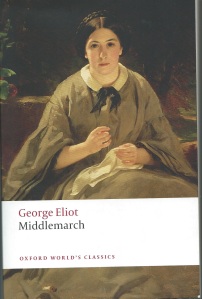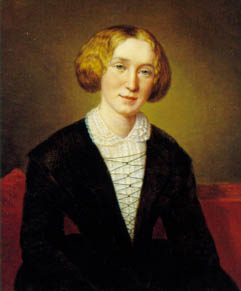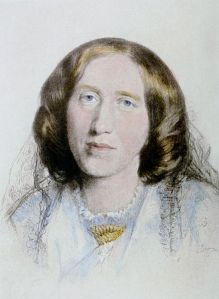Mary Ann Evans was a novelist, journalist and translator, and is described in Wikepedia and other places, as “one of the leading writers of the Victorian era.” Of her seven novels Middlemarch is the best known, and of course the author is known as George Eliot. Mary Ann thought her work would be taken more seriously if it was thought to be written by a man; she did not want to be stereotyped as a writer of lighthearted romances. She may also have been shielding herself from scandal about her twenty year relationship with George Henry Lewes, who was married to someone else.
Middlemarch is one of those books that is described as “one of the best books you have never read.” It first appeared in 1871-2 in episodes and was published as a book in 1874. It’s long, and requires attention and is a terrific book. The main protagonist, Dorothea, wants to “lead a grand life here — now — in England.” She envies the men around her their access to education and is desperate to find a means of doing good. (Her idea of a grand life has nothing to do with fame and fortune. She has plenty of money.) Industrialisation and the rise of science is changing every aspect of the world around her.
Interesting, if not always likeable, characters, male and female, abound. The writing is serious and engaging and there’s a kind of authorial commentary on the state of society from time to time. People — both their appearance and character — are described in detail, as are domestic, social and outdoor settings.
I can see that Middlemarch would not be to everyone’s reading taste, but I found it fun and rewarding. George Eliot is pretty perceptive about people and many of her character descriptions had me laughing out loud as I thought of contemporary figures they could apply to.



